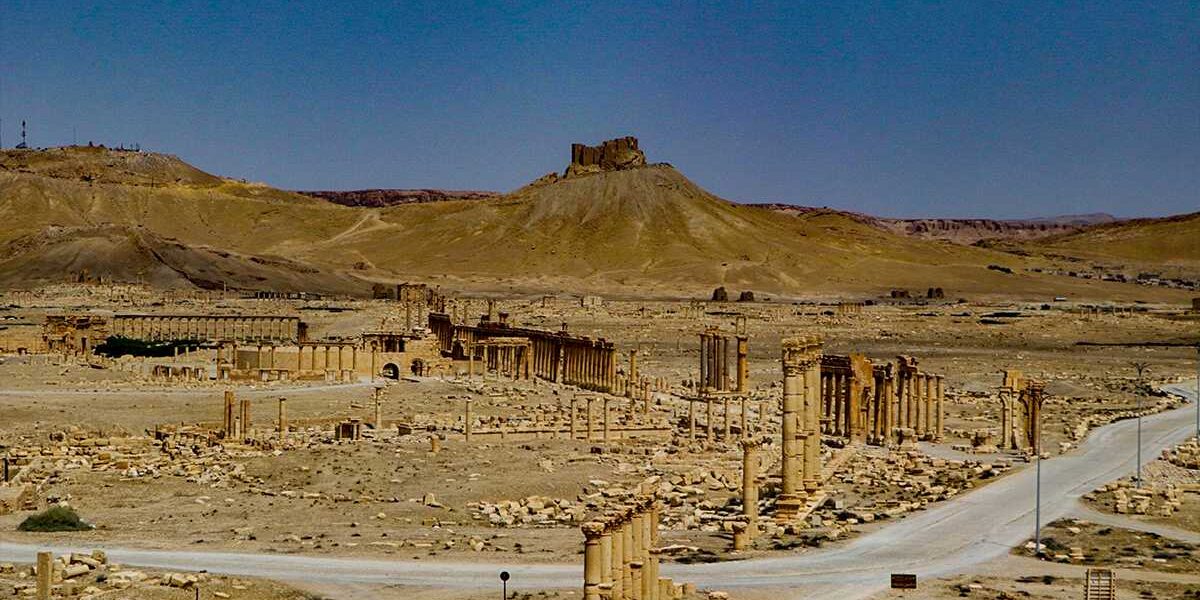The Birthplace of Civilization
Syria had contributed hugely to the humanity. It was a part of the fertile crescent and the agricultural revolution 12000 years ago. It was also included within the triangle of civilization, which is Mesopotamia, Egypt and Yemen. Syria is an open field that is not protected naturally from the four directions. As a result, it was a very difficult geography to control. Syria attracted all dynesties and empires of the region due to its strategic position in between three main continents, Asia, Euroup and Africa. That is why the one who controls Syria had to have a statecraft. On the other hand, being an open field allowed various ethnic and religious groups to take shelter inside it, and that what made the Syrian society a mosaic of cultures and a melting pot.
Syria has a total of six UNESCO sites
Ancient City of Aleppo: 5000 thousand years old city, part of the first line of civilization, the city of limestone and the thousands mosques and churches, the city of brilliant architecture.
Aleppo Citadel: An ancient fortress with a history dating back to the 3rd millennium BCE. The citadel offers panoramic views of the city and has been recognized as a UNESCO World Heritage Site.
Ancient City of Bosra: A unique Roman city with its basalt stone and its most intact Roman theater in the world. Step into the ancient city of Bosra, a UNESCO-listed site featuring a well-preserved Roman theater, ancient mosques, and Roman-era architecture that transports visitors back in time.
Ancient City of Damascus: Another 5000 years old city that was part of the first line of civilization. It is intact compared to Aleppo city, hugely destroyed by war. Wander through the enchanting Old City of Damascus, a UNESCO-listed site featuring narrow alleyways, bustling souks, and well-preserved historical architecture.
Ancient Villages of Northern Syria: More than 600 Byzantine villages untouched by human. (Currently not possible to visit)
Crac des Chevaliers and Saladin Citadels: Two of the crusaders castles scattered along the Syrian coastal areas. Both castles are breathtaking and still preserved and intact.
The site of Palmyra: often referred to as the “Miraculous Pearl of the Syrian semi-desert,” was once a powerful kingdom controlling regions south of Turkey, Syria, and Egypt. Despite facing destruction twice at the hands of ISIS, the enduring story of Palmyra lies in the resilience of its stones and ruins. Discover the archaeological wonders of Palmyra, another UNESCO World Heritage Site. Explore the Temple of Baal, the Arch of Triumph, and the ancient theater, reflecting the grandeur of this ancient city.
Visit all UNESCO sites with our Syria group tours.
Other important sites
Umayyad Mosque: The 8th century masterpiece of Damascus ancient city. Explore the iconic Umayyad Mosque, a UNESCO World Heritage Site, renowned for its architectural splendor and historical significance as one of the oldest and largest mosques globally.
St. Ananias Chapel: From where Christianity started to spread all over the world.
Damascus National Museum: One of the top 10 important museums in the world.
Maaloula: A Christian village that still speaks Aramaic, Jesus’s language.
Aleppo National Museum: It has a lot of rare artifacts including the relics of a 150 thousand years old Neanderthal child.
Aleppo Soap Factory: 800 years old factory that is still functioning.
Baron Hotel: Where Agatha Christy, Lawrence of Arabia and Sherlock Holms’ inventor stayed.
Hama Norias: A brilliant 3000 years old invention
Ancient Souks of Aleppo: where history and commerce intertwine. The city’s historic markets provide a glimpse into Syria’s trading traditions.

